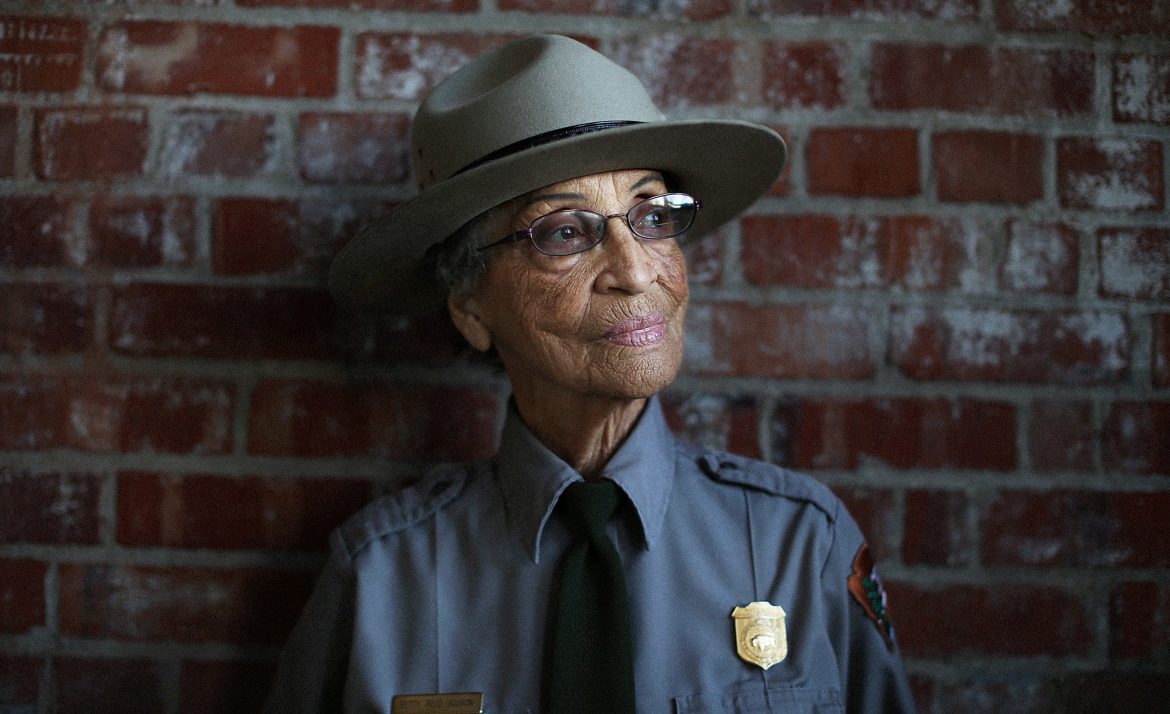When the Mississippi River flooded the south in 1927, one of the 200,000 African-Americans displaced was Betty Charbonnet, age 6. She left the home of her Cajun-Creole ancestors, where her great-grandmother was born a slave, and joined the Great Migration west, to California. “My mother arrived in East Oakland with three little girls, a crucifix, and everything we had left in a couple of cardboard suitcases,” she says.
There’s a hush in the small theater as the audience hangs on the words of a small woman in uniform, seated on a stool. Now 95 and known as Betty Reid Soskin, she is the oldest active U.S. National Park ranger, stationed at the Rosie the Riveter WWII Home Front Park in Richmond, Calif. She is famous for a presentation she gives after showing a film on the era, in order to tell a side of that story rarely heard.
In a polished monologue, Betty explains that after graduating from Oakland High School in 1942, a young black woman had two options: work in agriculture or become a domestic servant. But the war effort offered something new. She got a job at the shipyards where the park is standing today. “Being a file clerk, even in a segregated union hall, was a step up,” she says. “My folks were proud of me. It would have been the equivalent of today’s young woman of color being the first in her family to enter college.”
“If we don’t know where we started, we have no way of knowing how far we’ve come.”
In the film, women wearing coveralls are shown welding ships, and one says “I knew if I could do this, I could do anything.” But from her post at the union auxiliary hall, Betty never even saw a ship, and she’s hardly nostalgic for the era known as the genesis of modern women’s liberation. “That was a white woman’s story,” she says. “Black women were not emancipated by the second world war. Our mothers and aunts had been working outside their homes since slavery. It simply didn’t speak to me.”
Sixty years after the war, when the NPS started planning the Rosie the Riveter historical site, they invited some of the “Rosies” to the presentation. “I was the only person of color in the room, and the only person who could…





